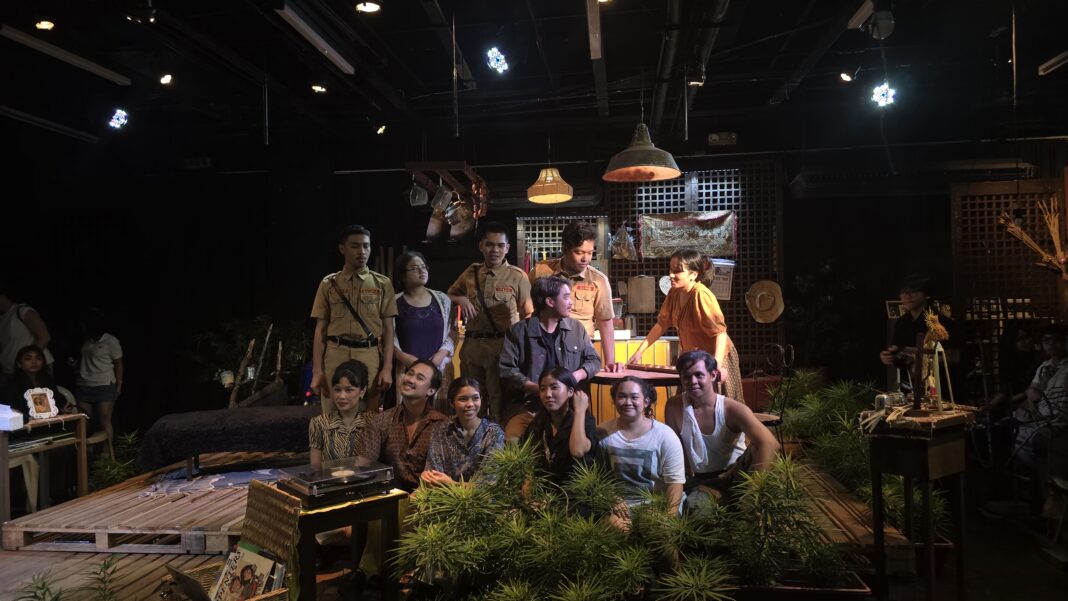FEU Theater Guild’s Karne is a “kettle play,” boiling and boiling, whistling to a cathartic climax that leaves the audience morally gray.
The audience could not be blamed if in the course of watching Karne, they end up forgetting that it was executed by a college theater organization.
Granted, it is one of the Philippines’ oldest student theater organizations. Having been established in 1934, such quality of work is to be expected from its 91st season.
Produced by the Far Eastern University Theater Guild (FTG), Karne is a dark comedy play which reimagines Roald Dahl’s 1953 short story “Lamb to the Slaughter” in the backdrop of a provincial life during Ferdinand Marcos Sr.’s enactment of Martial Law in the Philippines.
Written and directed by Dudz Teraña, a Senior Artist-Teacher at the Philippine Educational Theater Association (PETA) and the artistic director of the FEU Theater Guild, Karne is a tale of what happens when societal norms and political climate ensure and normalizes female disempowerment, disfigurement of relationships, extreme classism, and power imbalance.
WARM LIGHT, STARK SHADOWS
The play revolves around a cast of characters in Barangay Lubotan in Zamboanguita, Negros Oriental during the 1980 Lenten Season. It primarily follows the life and disasters of the couple Mary and Police Captain Patrick Patrosa, and how their dwindling married life becomes a tale reflecting the faults of a society that is internally rotting much faster than it could externally improve. A Filipino Christmas draws in a familial sense of warmth—or that is what seems. As the play progresses, warmth becomes a rare sight.
One of the most striking things about the play is how much the set production engages most ofthe senses. The Christmas decorations of a rural home in the 1980s. The realistic costumes stolen from time. The set which serves not only the characters but the execution of the story—all working together to caress one’s sight into a feeling of rural nostalgia, the sense of being somewhere near home, escaping the hurried pace of a city life. A good balance of warm light and stark shadows lulls in a feeling of a far and static yesterday that is characteristically Filipino.
Speaking of shadows, the play embraces the use of darkness and shadows to isolate the characters and the audiences’ attention. The production’s use of the three hanging lights on the set’s three corners is comical and genuinely brilliant. When all the lights are turned off, some side characters would stand under the yellow light, pulling the handle to turn it on, throw their lines in blistering speed, and turn in off almost always at the same time as another character would use the light to make a short monologue.
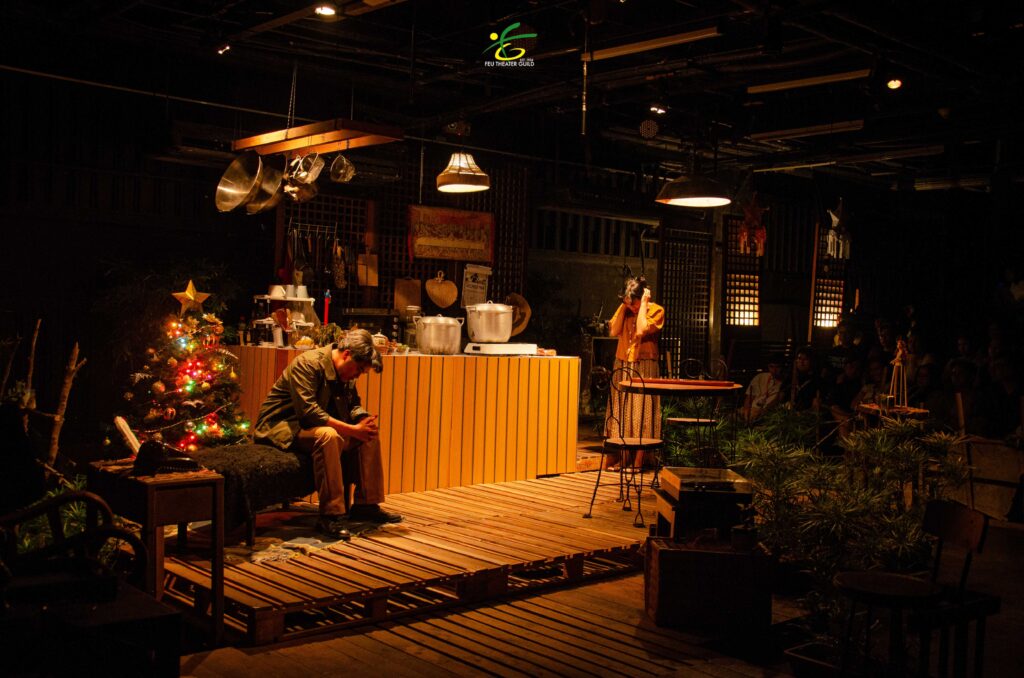
And this exchange of lines, the light helping the audience shift their focus from one character to another, is an ingenious way of mimicking stereotypical interrogation scenes from films. I assume this is not coincidental as the story is concerned with the murder of Police Captain Patrick Patrosa. Using light and space to signify the separation of spaces between the ‘testimonies’ makes it easier to follow the characters, their rage and motive, and what they truly think of the situation.
But even without relying on one’s sight, other senses remained engaged.
LYRICAL DIALOGUE
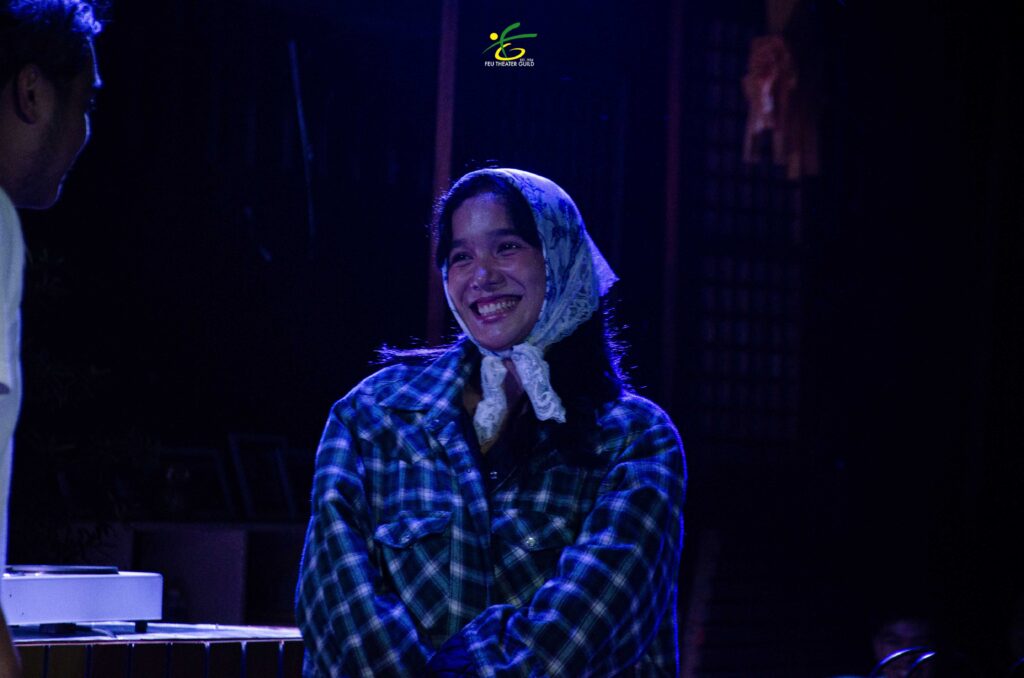
When the audience were still flooding in and settling into their seats, Mary (played by Julia Nicole Ramas during the press viewing) dropped the needle on an actual vinyl player where a song reeked from. The audience becomes non-existent as she wandered around the set like one ordinarily would in the comfort of her own home. Those who are in charge of the play’s auditory experience deserves great commendation from the choice of vinyl records alone.
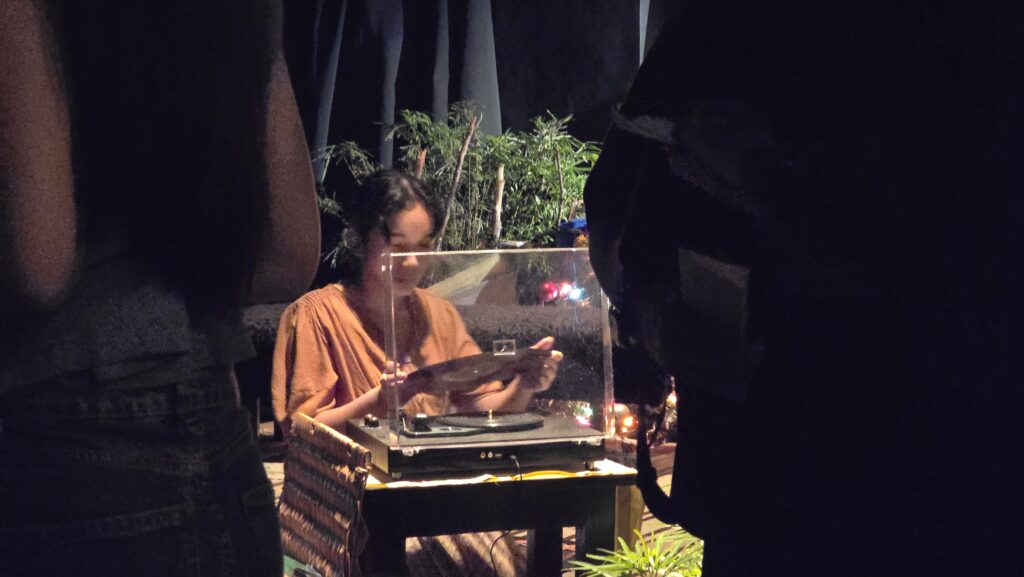
But out of all the music from the play, it is the lyrical dialogue that deserves the highest praise. Though the actors and the director/writer were not native from Visayas nor does Cebuano rolls off the tongue easily, the actors sold it so well that I have mistaken them to be natives of the language. The language itself is enchanting; mixing it well with Tagalog and tiny snippets of English brought a noteworthy auditory flavor. But the actors selling it? So ardently did I believe then that language is perhaps the oldest form of magic.
The language—how they swiftly changed from Tagalog, Bisaya, and a bit of English—is mesmerizing, as if they are incapable of saying anything that could be considered an assault. I may not have understood the Bisaya, but because it was mixed well with Tagalog and it was acted well, it detracted nothing from the experience.

The actors who played Mary’s three closest friends—Jharelle Villalobos as Dante, Maria Ysabel delos Reyes as Ellen, and Bjorn Pestano as Maloi—deserve more credit for juggling back and forth their lines in a language they are not familiar with, and doing so masterfully that there was no awkwardness or hesitation, but just pure emotion.
CONVINCING PORTRAYALS
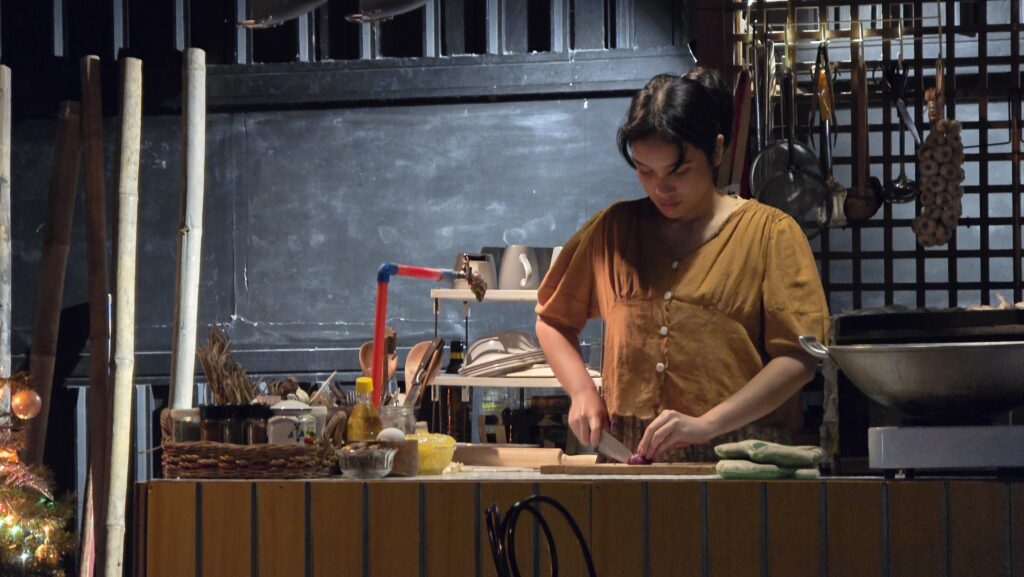
Though they could not engage the audiences’ sense of touch, they did, however, make a character out of the spectators’ sense of smell. (For one viewer, sense of taste included.) While the audience were busy looking for their seats when the house opened, Ramas went on and cooked an adobo on set. The aroma wafted through the air, drawing one’s entire body towards the stage. How Ramas accomplished cooking while having to throw her lines and not lose a sense of her own character is a remarkable feat. (This is most especially astounding anytime her friends would visit her in the comfort of her own home, where they would have to shoot lines so rapidly, react just as quick, and remain clean, without losing a beat.)
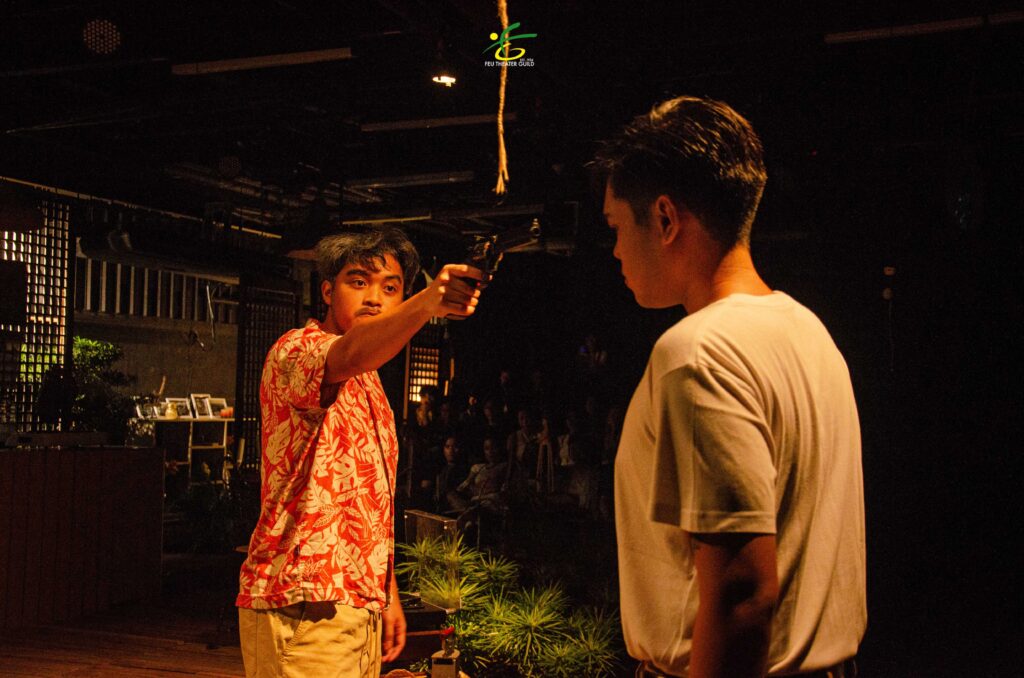
I think I have yet to see and hate a character as much as I did when I saw RB Pascua’s portrayal of Patrick Patrosa. At certain times, Pascua would almost fall into the trap of ‘overacting’ anger to the point of being comical. Fortunately, he doesn’t. Like a good actor, he showed restraint and he ended up reminding us of the devil in all of us. One doesn’t have to understand why he is angry, but one could definitely understand that, for whatever reason, he believed that he had every right to be.
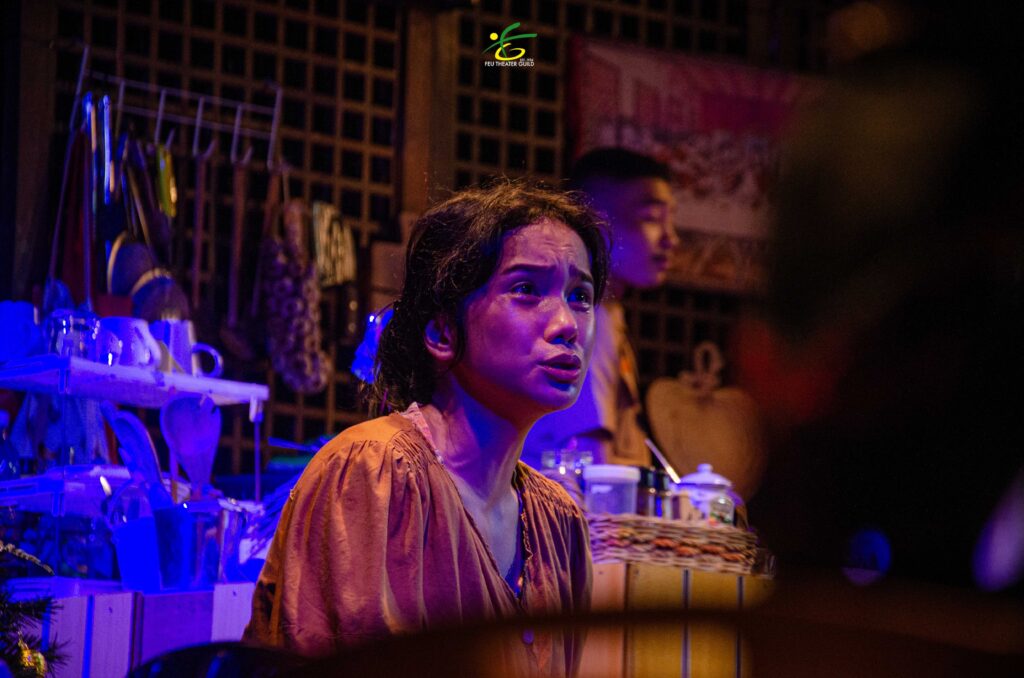
Julia Nicole Ramas, who played Mary, is no slouch either. She presents a masterclass in losing control. She sold the idea that one’s innocence is not a bottomless well from where one could draw infinite kindness from. It could always dry up.
Briefly, I would like to commend Heleina Li for a convincing portrayal of a kid; it is only when the show ended that I realized that she wasn’t the same age as her character. Having seen how stubborn young kids acted in the real world, I was definitely convinced that she was one. While I’m on it, Maria Ysabel delos Reyes (and her makeup team, as well, if she had any; if she did it all by herself, then all the more that a praise is due) sells the idea that she was affluent so well that it seemed as if she was kidnapped from the 1980s and brought to the present to act on a play.
MISSED OPPORTUNITIES
When the play ended, I quickly came to two conclusions: the first one is that, as a script, its metaphors and societal discussions had simmered just enough but not brilliantly. Its depth is only enough to serve the needs of the story, but not the audience. The second conclusion—and the most important one—is that it’s a story that does not really require a ludicrous amount of intellectual panache.
If it were a painting, it would be closer to the Romantics than it is to the Renaissance. It is a story that banks on raw, escalating, and explosive emotions.
It misses on some of the nuances of its intellectual pursuit and the inherent politics in its societal discussion. Though I can see that it is a well-researched play, it missed on opportunities to flesh out meaning by means of subtexts. The metaphor of cooking an adobo, among others, was enough to stop it from going dry and plebian, to say the least.
I feel the need to explain that by my saying that it missed on the nuances of intellectual pursuit, I meant that the play, at certain points during its runtime, tries to be deeper than it actually is.
But it does not remove anything from the experience, because it has no real need to flex the audience’s thinking muscles too hard. It only needed to present the reality from which the audience are more than welcome to interpret it on their own, even if the ending is a concrete one.
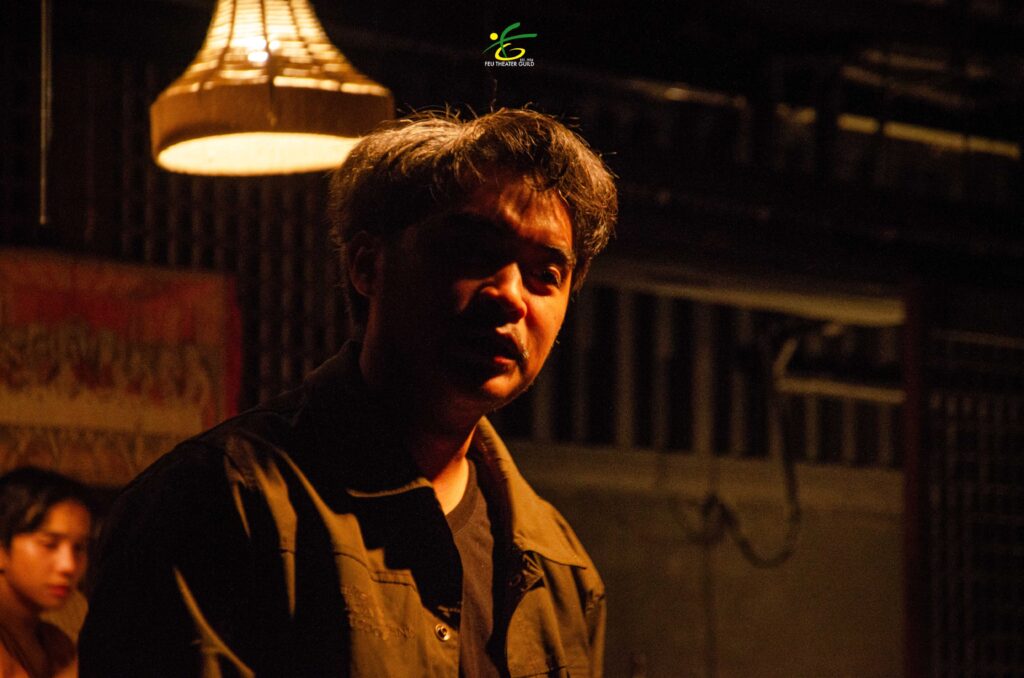
And the reality that Karne presents rings true even in today’s society. Though some progress has been made in the area of equality of whatever (good) kind, we still have a long way to go. Our society is much like the story—boiling, boiling, boiling, then it explodes. It is now pretty, but this is the only one we have. Don’t burn it.


